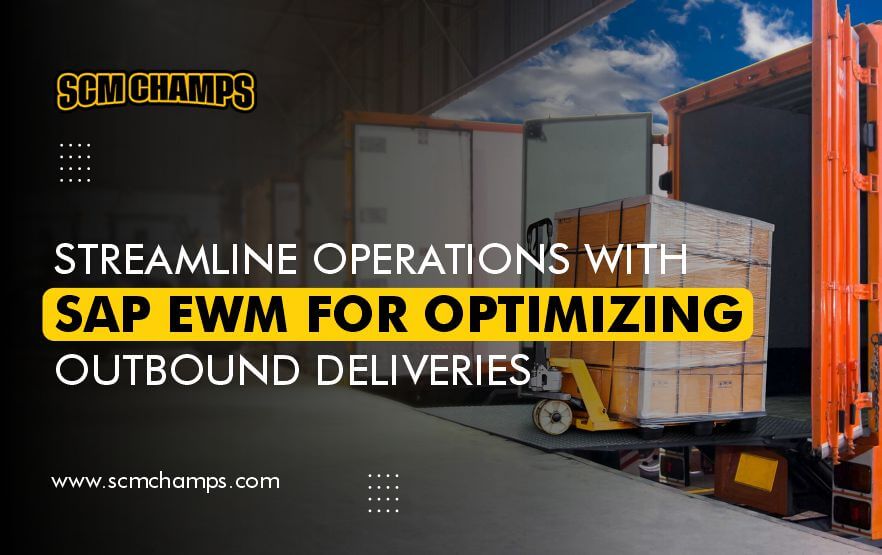
Introduction:
Managing outbound deliveries efficiently is crucial for businesses to ensure smooth operations and customer satisfaction. In this article, we will explore the process of handling outbound deliveries in SAP ERP and how it integrates with SAP Extended Warehouse Management (EWM). From unchecked deliveries to checked deliveries, we will discuss the various scenarios and documents involved. Additionally, we will cover topics such as reporting delivery changes, quantity change requests, goods issue confirmation, direct billing, outbound delivery splits, and replication of manually created outbound delivery orders to SAP ERP.
1. Unchecked Outbound Deliveries in SAP ERP:
When dealing with unchecked outbound deliveries in SAP ERP, they can be distributed to EWM for further handling. However, it’s important to understand that these deliveries are primarily intended for previewing and cannot undergo processing. In the EWM system, two essential documents are generated for unchecked outbound deliveries: an outbound delivery request and an outbound delivery order. It’s crucial to note that an outbound delivery order resulting from an unchecked delivery in SAP ERP cannot directly create a new outbound delivery.
2. Checked Outbound Deliveries in SAP ERP:
If SAP ERP converts unchecked outbound deliveries into checked outbound deliveries, it sends two messages to EWM. One message is for deleting the outbound delivery request and order created for the unchecked delivery, while the other message is for creating a new outbound delivery request and order for the checked delivery. Unlike unchecked deliveries, outbound delivery orders for checked deliveries can be immediately processed. EWM creates an outbound delivery request and order for checked outbound deliveries.
3. Reporting Outbound Delivery Changes to SAP ERP:
In EWM, if a pick denial occurs, it triggers a reduction in the delivery quantity, and an exception code is written in the outbound delivery order. This change is then confirmed to SAP ERP, which in turn reports it to SAP CRM. The pick denial results in a decrease in the delivered quantity, and the message to SAP ERP includes an indicator for the quantity change due to the pick denial. Using the Business Add-In (BAdI), SAP ERP can create a new checked delivery for the missing quantity and distribute it to EWM. EWM sets an indicator in the outbound delivery order’s Wave Priority field, allowing it to be taken into account during wave pick creation.
4. Quantity Change Requests from SAP ERP:
EWM can execute quantity change requests for checked deliveries based on sales order changes in SAP CRM or new assignments of order confirmations by SAP Advanced Planning & Optimization. These quantity changes are accepted by EWM as long as the outbound delivery order is not yet being processed. If the change is accepted, EWM reports the execution of the quantity change to SAP ERP. However, if the outbound delivery order is already in processing, the quantity change is rejected, and this rejection is reported to SAP ERP.
5. Communication of Goods Issue Confirmation:
In the world of SAP ERP and EWM integration, the process of notifying SAP ERP about a goods issue posting or reversal is as fascinating as it is efficient. Picture this: as products flow through the supply chain, EWM orchestrates the movement of goods with finesse, relying on the trusty outbound delivery to communicate with SAP ERP. But here’s the kicker – the cancellation of an outbound delivery can only be accomplished if it hasn’t donned the status of “In Transit.” So, in essence, EWM dances gracefully on the delicate tightrope of logistics, ensuring smooth operations and seamless communication between systems. It’s like watching a symphony unfold, with each instrument playing its part to perfection. So, remember, when it comes to SAP ERP and EWM collaboration, there’s a meticulous dance happening behind the scenes, keeping everything in sync and customers satisfied.
6. Direct Billing or Invoicing Before Goods Issue:
When it becomes necessary to generate an invoice within the warehouse prior to the goods issue, SAP Extended Warehouse Management (EWM) leverages outbound delivery orders to facilitate this process. By defining the “Invoicing Before Goods Issue” status for a specific route in Customizing, EWM activates an indicator that enables direct billing. Once the outbound delivery is created, EWM initiates data confirmation for direct billing, which is subsequently received by SAP ERP for invoicing. In cases where SAP CRM handles the billing, the data is seamlessly forwarded to the accounting system within SAP CRM.
7. Communication of Outbound Delivery Split:
In the realm of logistics management, EWM possesses the remarkable ability to divide outbound delivery orders in instances where the desired quantity exceeds the capacity of the chosen mode of transportation. This division leads to the creation of fresh outbound deliveries, which are then promptly communicated to SAP ERP by EWM. To maintain a seamless numbering system for documents, it is vital to establish distinct number range intervals through Customizing. This ensures that there is no overlap with the number ranges already present in SAP ERP, guaranteeing accurate and organized document identification.
8. Replication of Manually Created Outbound Delivery Orders to SAP ERP:
When a direct outbound delivery order is manually created and saved in EWM without errors, EWM immediately sends this order to SAP ERP using an interface for communication between the two systems.
Conclusion:
Efficient management of outbound deliveries plays a vital role in optimizing operations and meeting customer expectations. By understanding the processes and functionalities within SAP ERP and EWM, businesses can streamline their outbound delivery operations effectively.
Read also: Streamlining Inbound Deliveries with SAP EWM
From handling unchecked and checked deliveries to managing quantity changes and reporting goods issue confirmations, the integration between SAP ERP and EWM offers a comprehensive solution for managing outbound deliveries with ease


